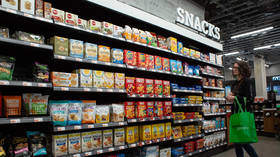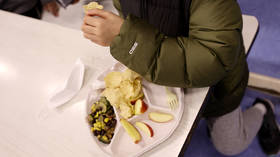Americans devour over $30bn in snacks

Sales of snacks in the US grew by nearly 7% last year, according to Chicago-based market research firm IRI, with Americans consuming $30.5 billion of them and the industry outpacing total food and beverage trends.
“The world is snackifying,” Rob Sarlls, former chairman of SNAC International, the leading international trade association for the snack industry, told MarketWatch.
“It’s not the three square meals we remember growing up,” MarketWatch quotes Denise Purcell from the Specialty Food Association, an organization representing the gourmet industry, as saying.
IRI reported across-the-board growth in the snack sector last year, with potato chips up 3%, dried fruit up 15%, toasted corn nuts up 16.2%, and dried meat up 21.3%.
The statistics suggest that more people are choosing leaner and healthier options, as around 40% of adults in the US suffer from obesity, according to the American Centers for Disease Control and Prevention (CDC).
Manufacturers are jumping on the health food bandwagon and offering new, more adventurous products. Cold oatmeal, marinated lupini beans, and pickled cauliflower florets are reportedly becoming more popular.
When it comes to the health benefits of snacking, research supports opposing views. While some studies suggest that it may help control appetite, others claim it may contribute to recreational eating and excess calories, says Food and Nutrition magazine, adding that the quality of meals and snacks is more important than the frequency of eating.
The CDC says that healthy eating plans allow for just one or two small snacks a day, with fresh fruit and vegetables the way nature provided them being the best choice. It explains that a whole fruit provides a larger snack than the same fruit dried – for the same number of calories.
For more stories on economy & finance visit RT's business section














